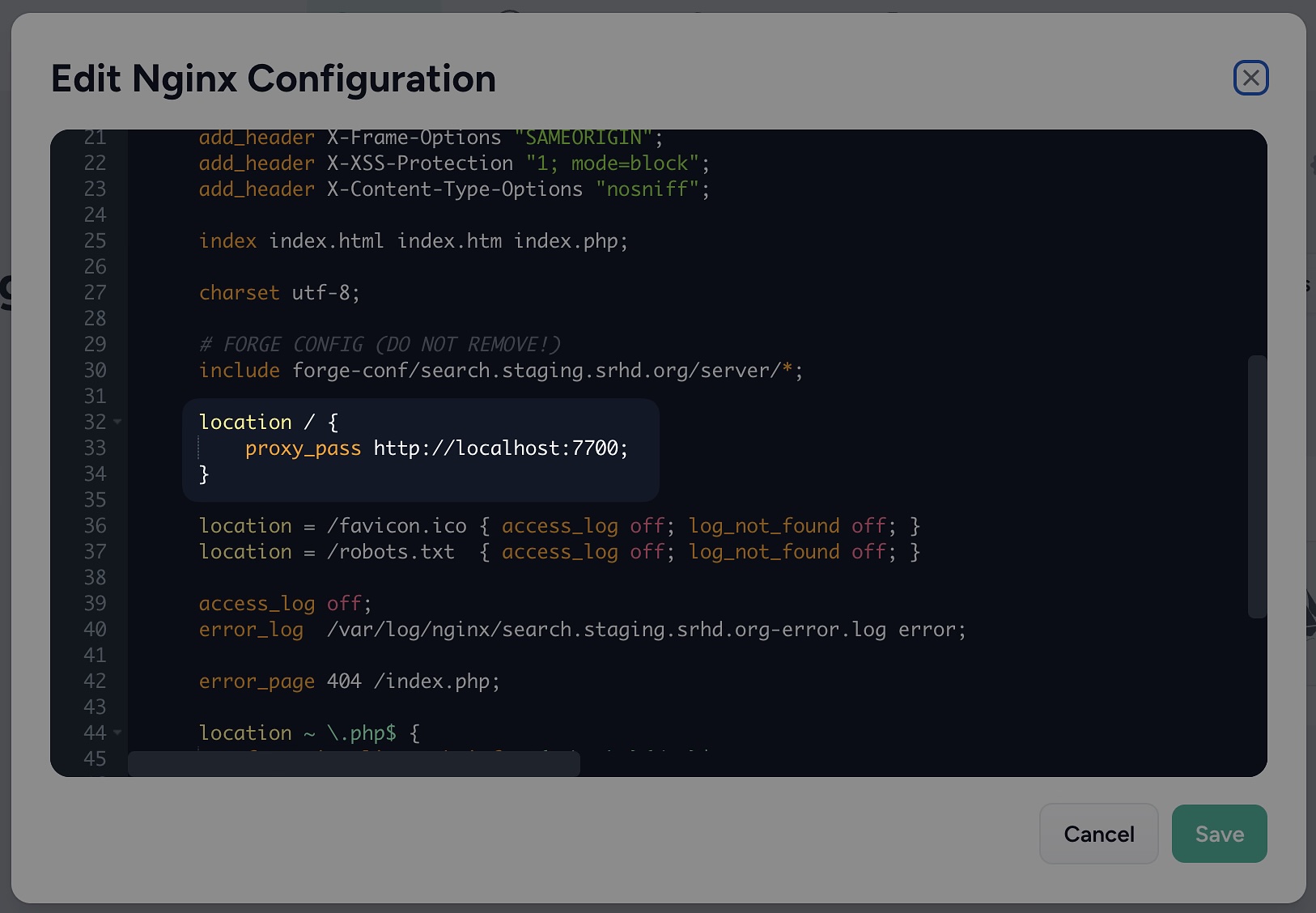Meilisearch Set Up
Setting up the plugin
In your local dev environment, install the Meilisearch Connect plugin
Setting up in DDEV
Install Meilisearch
We need to configure DDEV to create a Meilisearch container when we run it for the site. To do this, create the following file in .ddev/docker-compose.meilisearch.yaml
NOTE that the version of Meilisearch used in this docker compose snippet is likely outdated and the latest version supported by our plugin should be used instead.
version: '3.6'
services:
meilisearch:
container_name: ddev-${DDEV_SITENAME}-meilisearch
image: getmeili/meilisearch:v1.11.1
hostname: ${DDEV_SITENAME}-meilisearch
expose:
- "7700"
environment:
- VIRTUAL_HOST=$DDEV_HOSTNAME
- HTTP_EXPOSE=7700:7700
- MEILI_MASTER_KEY=meilisearchlocal
- MEILI_ENV=development
volumes:
- type: "volume"
source: meilisearch
target: "/data.ms"
volume:
nocopy: true
- type: "bind"
source: "."
target: "/mnt/ddev_config"
- ddev-global-cache:/mnt/ddev-global-cache
labels:
com.ddev.site-name: ${DDEV_SITENAME}
com.ddev.approot: ${DDEV_APPROOT}
web:
links:
- meilisearch:meilisearch
volumes:
meilisearch:
Once you have created that file, restart DDEV
ddev restart
Create environment variables
Create the following environment variables in your project
MEILI_HOST_URL="http://YOUR_DDEV_DOMAIN:7700"
MEILI_ADMIN_API_KEY="meilisearchlocal"
MEILI_SEARCH_API_KEY="meilisearchlocal"
You'll also need to create variables for your required indexes. These will be used within the Meilisearch Connect config file. For example;
MEILI_PAGES_INDEX="pages"
MEILI_OER_INDEX="oer"
MEILI_PEARL_INDEX="pearl"
Create the Index config
Refer to the Meilisearch Connect documentation
Run the sync command
Before you can access the CP utility or do anything with Meilisearch Connect, you will need to sync the Meilisearch settings. Run the following command
ddev craft meilisearch-connect/sync/settings
Setting up a Staging instance
Create a Forge App
For the Staging instance we want to create an empty app within Forge. This can be done on the same server that the Staging site is running on.
- Log in to Forge.
- Locate the staging server for the site you are working on.
- Click "New Site"
- Add the domain, for consistency with our other sites use search-staging.example.com (CloudFlare doesn't like nested subdomains)
- Project type should be PHP/Laravel/Symfony
- The Web Directory doesn't really matter
- PHP Version should be 8.3+
- There is no need to create a database or do anything else
- Click Add Site to create the site
- Create an SSL certificate for the site within Forge
There is no need to configure anything else on this server. We will do the rest via the command line
Install Meilisearch
Next you will need to SSH into that Forge App and install Meilisearch. You can refer to the following instructions (even though this isn't for Production) https://www.meilisearch.com/docs/guides/running_production
Follow steps 1-4. There is no need to do any more for the staging instance.
You'll need to use sudo to create the service. The sudo password for the server should be recorded in Bitwarden.
When Meilisearch starts it will generate a master key. It is important to make a note of this in Bitwarden for future reference. You will need it later.
Configure a domain for Meilisearch
We then configure a domain name to point at that app. You may need to do this within Cloudflare if that's being used for the site. Add an A record pointing at search-staging for the staging domain.
Set up environment variables
In your Craft .env file, create environment variables for the API keys. For the purposes here we can use the same key for both Admin and Search API Keys.
MEILI_ADMIN_API_KEY="MASTERKEY"
MEILI_SEARCH_API_KEY="MASTERKEY"
Update Forge nginx config
Update your site's Nginx config file,

Test the Meilisearch instance
You should now be able to visit the Meilisearch staging domain in your browser and see the GUI
Setting up a Production instance
As above but with additional steps for the installation of Meilisearch